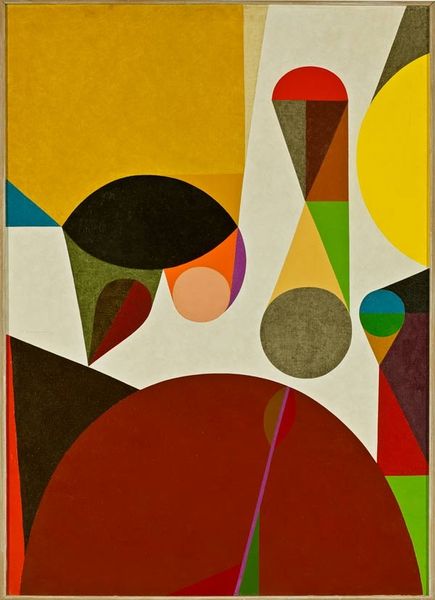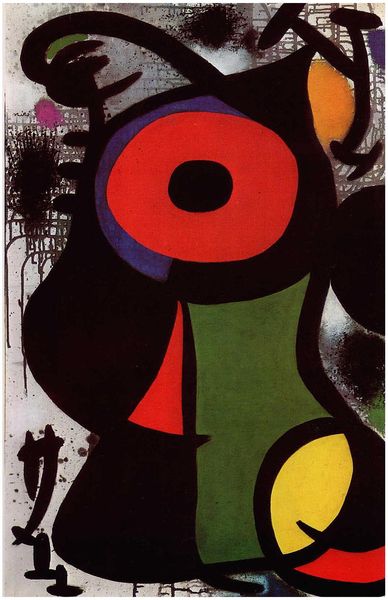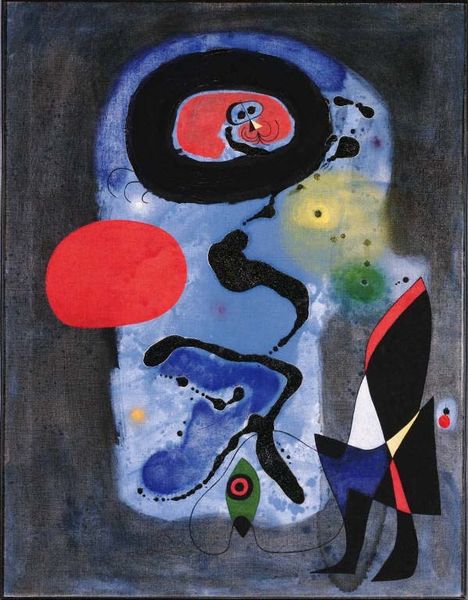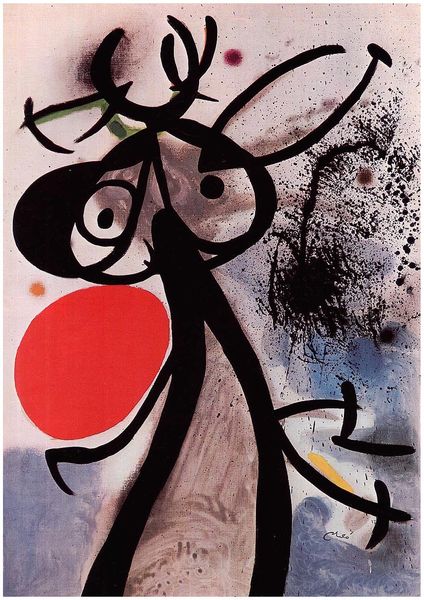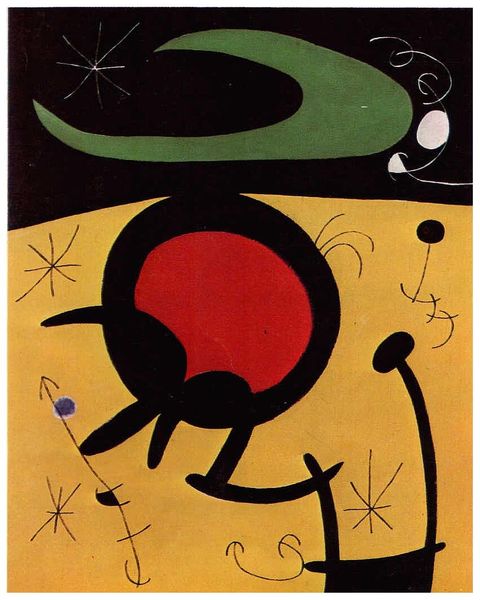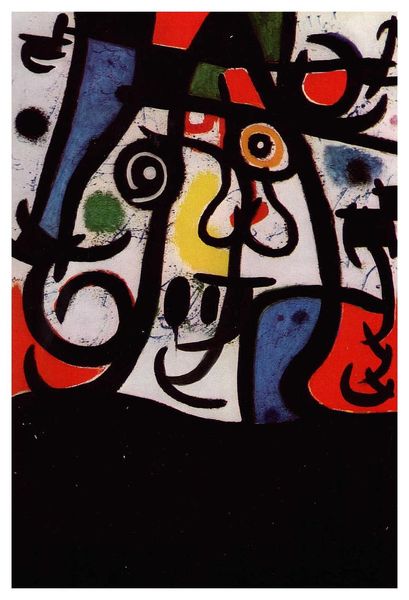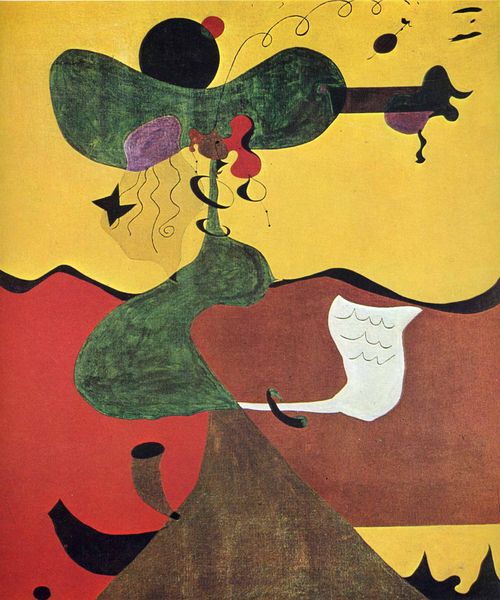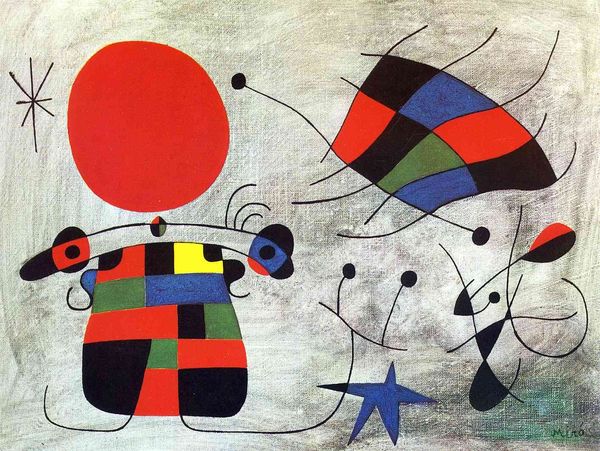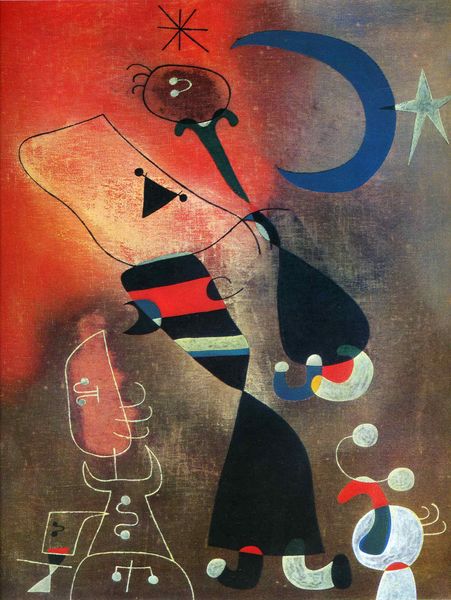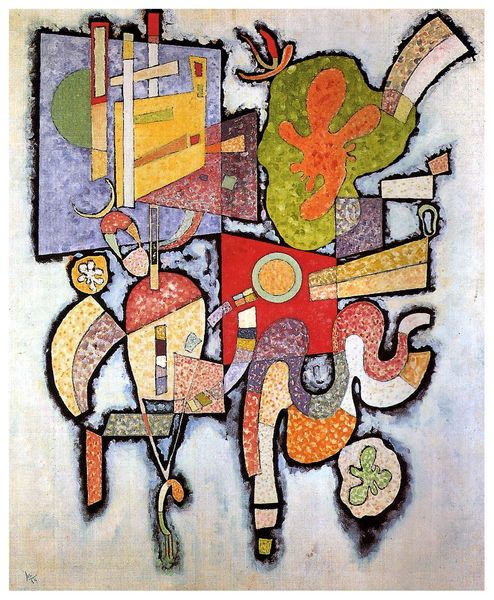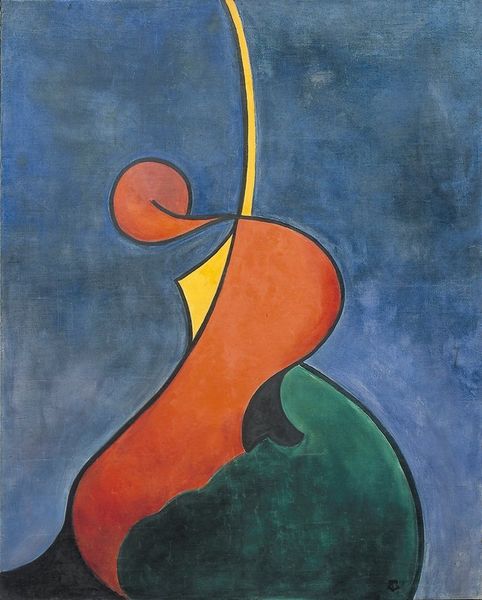
Copyright: Joan Miro,Fair Use
Curator: Looking at Joan Miró's "Woman in the Night" from 1974, executed using acrylic paint, I am immediately struck by its stark chromatic scheme—so evocative and rather theatrical! Editor: Indeed! I see the theatricality, too, especially in the staging. One could certainly examine its placement within Miró's later oeuvre, a period of significant cultural and political unrest in Spain. Was he trying to elicit similar emotional reactions, reflecting on the public anxiety of his context? Curator: Possibly, but from a formal standpoint, note how Miró orchestrates a careful visual equilibrium through contrasting forms and bold applications of pure hue. Observe, particularly, the interplay between geometric and biomorphic elements—this provides the artwork’s central dynamism. Editor: You raise a critical point. These abstract symbols almost function as pictograms—a lexicon born out of the social upheavals and the longing for meaning evident in post-war Europe. I can imagine viewers engaging, deciphering these forms for an idea. Curator: Yes, the "deciphering" as a fundamental compositional strategy is also crucial here. Notice the meticulous arrangement, with forms layered yet distinctly isolated. Editor: Isolating to heighten, I would venture to add. We often overlook how deeply the act of seeing art itself is steeped in social norms, yet it informs how audiences react to non-representational imagery, potentially complicating or challenging conventions to make his commentary on culture, perhaps a political statement. Curator: Perhaps! To continue examining how Miro’s method affects this specific painting's effect, can we both concede to celebrate the sheer materiality, this interplay among hue, surface and space, that activates the gaze, almost beckoning it to partake? Editor: The painting invites participation, undeniably. Considering Miro's body of work and impact, "Woman in the Night" really prompts pondering where an artist stands on social issues while continuing to push the boundaries of abstract form. Curator: It leaves one reflecting on art's potential as an ongoing engagement with the visible, in which both abstraction and emotion become valid forms for reflection, and where meaning can emerge with or without symbolic references.
Comments
No comments
Be the first to comment and join the conversation on the ultimate creative platform.
